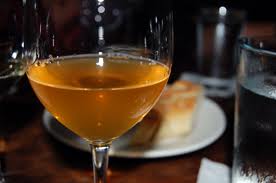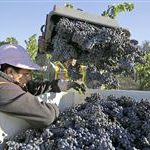Red, White and Orange (?) Wine

Those in the wine world go back and forth with their opinions about it. It’s been called the “hipster of the wine world.” The majority of wine-drinking Americans have never tried it. What is this phenomenon? Orange wine. Yes, it exists. No, it doesn’t have anything to do with the citrus fruit of the same name.
Technically a form of white wine (it’s made from white wine grapes) the process is similar to red, since the wine is given extended time with the grape skins. So, what we have is a white produced like a red – resulting in a bright amber color wine having the acidity of white wine, but the tannins that often give red wine its bitter quality. Therefore, it interestingly has characteristics of both white and red, creating its very own unique category (and taste).
Orange wine is not technically a recent invention, although it has been having a bit of an under-the-radar resurgence as of late. The process actually first occurred thousands of years ago, in countries like Armenia and Georgia. It was then later adopted by winemakers in Italy, Slovenia, Croatia, France, Germany, New Zealand, and eventually America – specifically California and New York.
Another distinctive trait of orange wine is that it’s often aged and fermented in open air, so the wine partly oxidizes, which helps turn out that burnt-orange/dark honey color. Some winemakers even still ferment or age the wine in clay vessel, as it was once done. Others use open- top barrels. Either way, the result is a wine that is similar to white and has that minerality white has…but also has a bit more color, texture, and bite than your typical white. Therefore, pairing can get a bit tricky. As always, you should pair with your own palette and preferences in mind – nothing is technically wrong if you like it, contrary to old-school wine rules. However, foods that are earthy, a little meaty, and even salty would be a great place to start when trying an orange wine.
If you happen to live (or find yourself in) Phoenix, Arizona, you can easily try this tawny-hued trend at local husband-and-wife owned Tempe spot, Café Boa. They dedicate an entire section of their (extensive and award-winning) wine list to orange wine. [cafeboa.com]
In California, try to get your hands on Prince in His Caves from NAPA winemaker Abe Schoener’s Scholium Project. This version is repeatedly called “refined” and reviews call it “orange wine done well.” [scholiumwines.com]
In a store or online? Order a bottle out of Long Island, NY; like Meditazione from Channing Daughters Winery [channingdaughters.com].
Now that you know a little bit about this obscure wine – you have great fodder for party conversation and a new thing to look for on wine lists. Enjoy!

















Pingback: Cook Dinner or Night Out? Both!